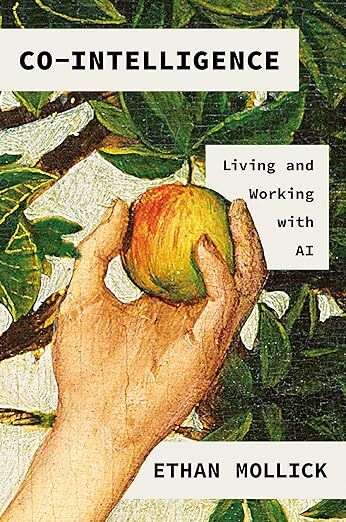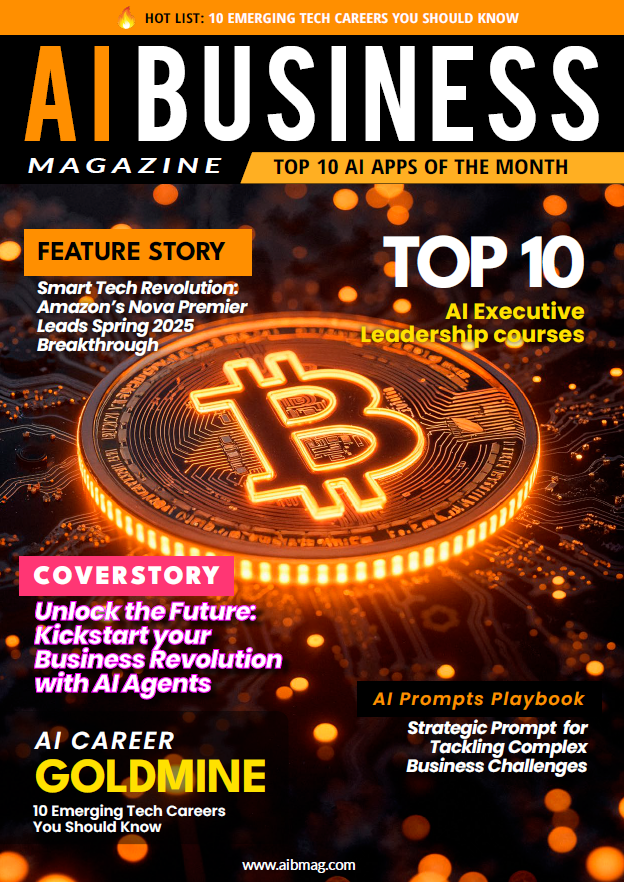Overview
Artificial intelligence has moved far beyond the realm of science fiction and tech conferences. Today, it’s reshaping how companies operate, compete, and grow. For business leaders, the challenge isn’t whether to embrace AI it’s how to do it smartly, without getting swept up in the hype or making costly mistakes.
This month, we’re spotlighting two groundbreaking books that offer practical wisdom for executives who need to understand and implement AI effectively. For those following the latest AI news or curating their personal reading list from the best AI newsletter sources, these titles are must-reads.
Co-Intelligence: Living and Working with AI
– By Ethan Mollick

Co-Intelligence emerged from Ethan Mollick’s unique position as both a Wharton Business School professor and a hands-on practitioner of artificial intelligence tools. Unlike many academic treatments of AI, this book draws from Mollick’s daily experience using AI systems for teaching, research, and consulting work. The book’s 300 pages focus intensively on the practical reality of working with today’s AI tools, particularly large language models like ChatGPT and Claude. For readers exploring the top 10 AI tools like ChatGPT, this book provides valuable, experience-backed insight into how those tools are reshaping daily workflows.
What makes this book particularly valuable is its timing and approach. Published in 2024, it captures the current moment when AI tools have become sophisticated enough to be genuinely useful but still require human oversight and skill to use effectively. Mollick wrote this book not as speculation about the future, but as a guide for people who want to start using AI productively right now. The author’s background in organizational behaviour and innovation gives him a unique lens for understanding how new technologies get adopted in workplace settings.
The Partnership Approach
Ethan Mollick’s approach to artificial intelligence stands out because it’s refreshingly practical. Rather than focusing on fears about AI replacing humans or grand predictions about the future, Mollick concentrates on what’s happening right now. His central concept revolves around partnership—what he calls being a “centaur,” combining human judgment with AI capabilities.
This reframing shifts the discussion from “man vs. machine” to “man with machine” — a view that resonates with readers who follow AI Business Magazine and seek realistic guidance on using them in their teams.
This perspective shifts the conversation away from competition between humans and machines toward collaboration. Mollick argues that today’s AI tools, particularly those that generate text and creative content, represent more than just improved software. They’re fundamentally different tools that require us to rethink how we approach our daily work.
Learning to Communicate with AI
One of the book’s greatest strengths lies in its practical guidance on working with AI systems. Mollick compares AI to a brilliant intern who works incredibly fast and knows a lot but needs careful supervision. This analogy helps readers understand both the potential and the limitations of current AI technology. These kinds of use cases show exactly how to build AI tools into workflows in a way that enhances not overwhelms human contributors.
The book provides concrete advice on how to communicate effectively with AI systems—what technologists call “prompting.” Mollick walks through real workplace scenarios: crafting better emails, generating creative ideas for marketing campaigns, and even helping with basic coding tasks. The examples feel authentic because they come from actual business situations, not hypothetical scenarios.
What makes this guidance particularly valuable is Mollick’s emphasis on AI handling routine tasks while humans focus on strategy, creativity, and decision-making. This division of labor can dramatically improve productivity without overwhelming workers with new technology.
Why Leaders Should Pay Attention
For busy executives, this book offers something rare: clarity without complexity. Mollick writes in plain English, avoiding technical jargon that can make AI seem intimidating or inaccessible. You don’t need a computer science background to understand and apply his recommendations.
The book also provides immediate value. You can start implementing Mollick’s suggestions with your team tomorrow, beginning with small experiments that help everyone learn and adapt gradually. These incremental changes often lead to significant improvements in how work gets done.
Perhaps most importantly, Mollick advocates for a thoughtful, questioning approach to AI. He consistently reminds readers to verify AI output and develop skills in evaluating what these systems produce. This balanced perspective helps leaders harness AI’s power while avoiding potential pitfalls.
Available on Amazon: Click here
Agentic Artificial Intelligence: Harnessing AI Agents to Reinvent Business, Work and Life
– By Jochen Wirtz

Agentic Artificial Intelligence represents a collaboration between three experts who bring different but complementary perspectives to the challenge of understanding autonomous AI systems. Pascal Bornet brings extensive experience in business process automation and digital transformation from his work with major consulting firms. Ian Barkin contributes deep knowledge of robotic process automation and how organizations actually implement new technologies. Jochen Wirtz adds an academic perspective from his research on service innovation and customer experience at the National University of Singapore.
The book’s 350+ pages tackle what many consider the next major evolution in artificial intelligence: systems that can operate independently to achieve complex goals rather than simply responding to specific commands. Published in late 2023, the book addresses a concept that was largely theoretical just a few years ago but is now becoming practically achievable. The authors wrote this work specifically for business leaders who need to understand not just what AI agents can do, but how to prepare their organizations for a world where AI systems can handle sophisticated, multi-step processes with minimal human supervision.
What sets this book apart is its focus on implementation reality rather than technological possibility. The authors consistently ground their discussions in real business contexts, acknowledging both the transformative potential and the significant challenges that come with deploying more autonomous AI systems.
Understanding AI Agents
The concept of AI “agents” might sound like something from a futuristic movie, but this book makes clear that we’re closer to this reality than many realize. These aren’t simple chatbots or basic automation tools. AI agents are systems designed to understand goals, create plans, and take action independently.
The authors do an excellent job explaining what makes AI agents different from current AI tools. Where today’s AI typically responds to specific requests, agents can work toward broader objectives with minimal human oversight. This capability could transform entire industries by handling complex, multi-step processes that currently require significant human involvement.
The Business Transformation Ahead
The book’s strength lies in mapping out how AI agents could reshape various business functions. The authors provide concrete examples across industries: customer service agents that resolve complex issues from start to finish, logistics systems that optimize supply chains in real-time, and product development processes that adapt based on market feedback.
What sets this book apart is its honest treatment of challenges alongside opportunities. The authors don’t shy away from discussing ethical considerations, potential job displacement, and the need for robust governance frameworks. This balanced approach helps leaders prepare for both the benefits and the responsibilities that come with more autonomous AI systems.
Strategic Preparation for Leaders
For executives planning beyond the next quarter, this book provides essential strategic thinking. It pushes readers to envision how more sophisticated AI could create entirely new business models and competitive advantages. This forward-looking perspective proves invaluable for long-term planning and investment decisions.
The authors also offer practical guidance on beginning to explore AI agents while managing associated risks. They outline what organizations need in terms of technology infrastructure, workforce development, and governance policies. This roadmap helps leaders innovate thoughtfully rather than rushing into new technology unprepared.
Keeping Humans at the Center
Despite its focus on autonomous AI systems, the book consistently emphasizes human-centered approaches. The authors argue that AI agents should amplify human capabilities rather than replace human workers entirely. This perspective helps leaders think about AI implementation in ways that benefit both their organizations and their people.
The book positions AI agents as tools that handle routine, complex tasks, freeing humans to focus on creativity, strategic thinking, and relationship building areas where human skills remain irreplaceable.
Available on Amazon: Click here


